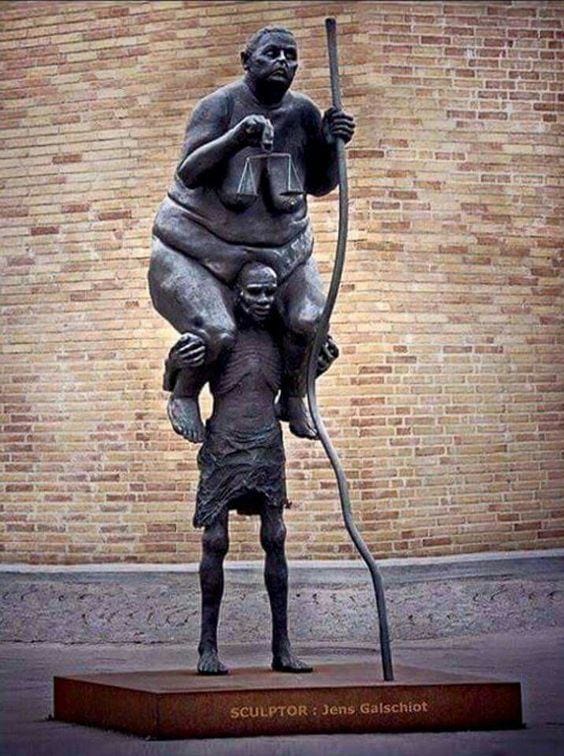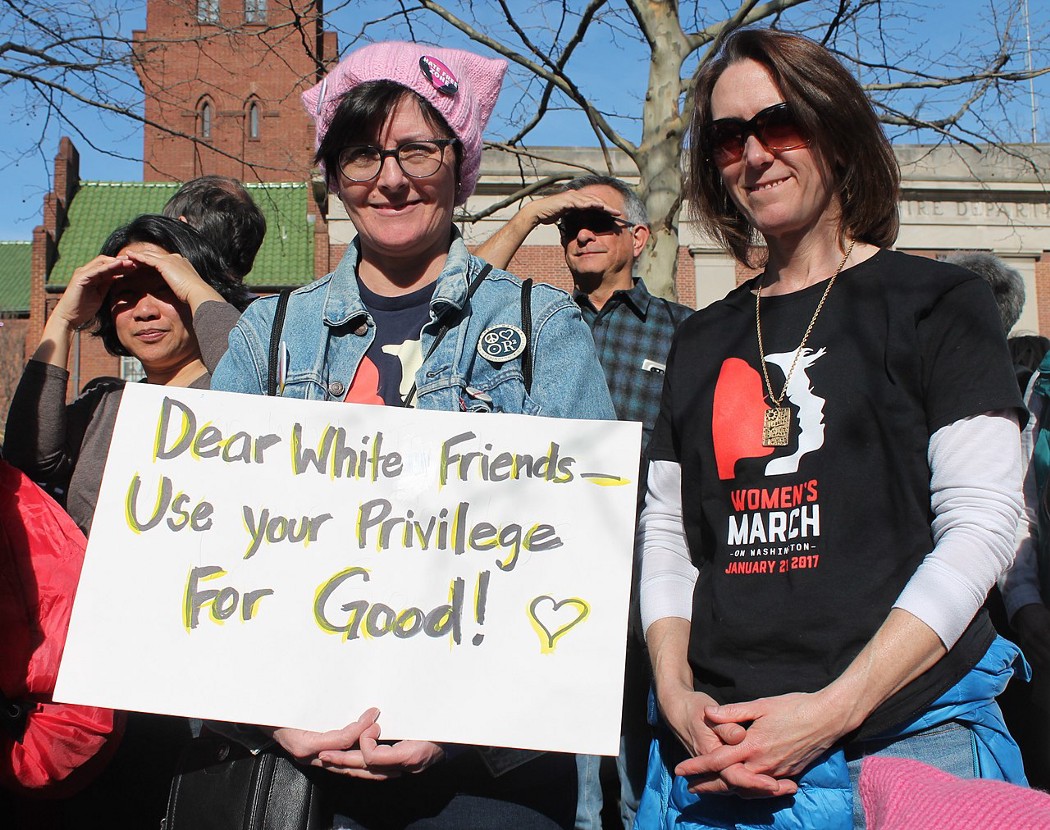Two Aspects Of Privilege
Privilege has always been used in one of two ways: 1) to preserve privilege by promoting and maintaining inequity, or 2) to challenge privilege by promoting diversity, equity, or inclusion.
Since privilege is relational, it is always possible to find ourselves in relations where we possess more privilege than someone else, even though we may also at times find ourselves in relations where we possess less privilege.
The question is how do we use our privilege in those times when we possess more privilege than others? Do we use our privilege to preserve privilege or do we use our privilege to challenge privilege?
These are the only two options. There is no neutral ground. If we are not challenging privilege, we are by default preserving privilege.
Defining Our Terms
This article has several familiar terms. In some ways, these terms have become popular buzzwords often used by people and organizations that want to be seen as progressive.
While diversity, equity, and inclusion are often used interchangeably, they are not synonymous. Before defining diversity, equity, and inclusion, however, I want to begin by defining privilege.
Privilege
I define privilege as “a special advantage granted or available to a particular person or group of people that results in an inequitable disadvantage being experienced by others.”
The last part of this definition is crucial because people will often identify measures designed to correct inequities as measures granting “privilege.”
For example, some people try to argue that measures designed to correct racial disparities end up granting “privilege” to people who experience negative racial disparities.
I disagree with this argument because corrective measures designed to eliminate negative racial disparities experienced by black and brown people rarely result in “an inequitable disadvantage being experienced by white people.”
Corrective measures do not award “privilege.” The reason is that they rarely result in “inequitable disadvantages” being experienced by other “groups” of people. Corrective measures seek to eliminate inequitable group disadvantages.
We live in a society where special advantages available to men result in inequitable disadvantages being experienced by women. None of the current corrective measures (including the “Equal Rights Amendment” — which has yet to be ratified even though it was passed by Congress in 1972) result in an inequitable disadvantage being experienced by men.
Diversity
Diversity is the presence of “difference” within a given setting. Diversity includes all the ways in which people differ. While it might seem obvious, it is important to understand that diversity is about a collective or a group and can only exist in collectives.
An individual is not diverse. He or she might be unique, but not diverse. They might bring diversity to your institution, but they in and of themselves are not diverse. They’re a woman; they’re a person of color; they’re part of the LGBTQIA+ community. While they might possess multiple and socially perceived opposing intersectional identities (all of which contribute to their uniqueness), one person by themself does not equal diversity.
Diversity is about a collective or a group and can only exist in collectives.
Equating one person with diversity often results in “tokenism.” Diversity occurs in a collective that exhibits measurable differences across that collective.
Inclusion
Inclusion is about folks with different identities feeling and/or being valued, welcomed, and empowered to participate fully in life and decision-making processes within a collective. I once read somewhere that “while diversity can be achieved by inviting different kinds of people to a party, inclusion is achieved when those different kinds of people are equally involved in the planning of the next party.”
The presence of diversity does not mean everyone (particularly those with marginalized identities ) is included. It doesn’t mean everyone will be given opportunities to contribute, grow, develop, and express who they truly are.
Inclusion is not an automatic consequence of diversity. As a black professor at a predominantly white liberal arts college, I am acutely aware that colleges often spend a significant amount of time and money bringing diverse populations of people to their campuses without ever changing the environment of their campuses — without creating an ethos where people can be who they truly are. It’s not enough to have explicit strategies for increasing diversity. There also needs to be specific strategies for increasing inclusion.
Equity
Equity represents fair treatment, access, opportunity, and advancement for all people, while at the same time striving to identify and eliminate barriers that prevent the full participation and inclusion of people who are often marginalized.
Equity is an approach that ensures everyone has access to the same outcomes. Equity recognizes that advantages and barriers exist, and that, as a result, everyone does not start from the same place. People, therefore, may need different opportunities to achieve the same outcomes.
Seeking equity involves developing processes that acknowledge unequal starting points and that seek to ensure equal outcomes despite unequal starting points. It also involves reducing/eliminating barriers that prevent equal outcomes.
DEI and Racial Justice
While I have been referring to diversity, equity, and inclusion (DEI) in general, I’d like to now consider DEI through a lens of race and racial justice.
I believe all conversations regarding DEI (especially within higher education) need to be explicit in foregrounding race and racial justice as part of the conversation.
According to the online Racial Equity Tools Glossary, racial justice is “the proactive reinforcement of policies, practices, attitudes, and actions that produce equitable power, access, opportunities, treatment, impacts, and outcomes for all.”
There has been much opposition to critical race theory (CRT) being taught in school. CRT arose as a legal theory studied and taught in law schools. Critical race theory is NOT being taught in most public K-12 school systems.
Most people who oppose CRT are actually opposed to addressing and teaching about race and racism in public schools. It is impossible, however, to eradicate racism without talking and teaching about racism.
We Have To Be Willing To Talk About Race
Many Americans are often uncomfortable and/or unwilling to explicitly talk about race, racism, and racial justice. As Robin DiAngelo asserts, much of the difficulty white people (and therefore white institutions) have with talking about race, racism, and racial justice is connected to what DiAngelo calls “white fragility.”
According to DiAngelo, white fragility is discomfort and defensiveness experienced by white people when confronted with information about racial inequities and injustice.
There are essentially two reasons why most white people get uncomfortable talking about race, racism, and racial justice. One reason is that they don’t know how to talk about these issues and they’re afraid of being criticized for saying something wrong.
The second reason is that they’ve bought into the false and naïve notion that they are “colorblind.” They argue that race is a social construct and therefore not real. While race is indeed a social construct for which there is no biological basis, race and racism are social realities.
Stop Lying About Being Colorblind
Anyone who says they don’t see a black man when they look at me is lying. If I went on a shooting rampage and then fled, virtually everyone present would describe me to the police as a “black” man. No one would tell the police, “Well, officer, you know… I didn’t see his color.”
People who claim to be colorblind falsely equate seeing blackness with thinking negatively about blackness. Which when you think about it, shows how deeply ingrained racism and racial bias are.
Because we’ve been conditioned to think negatively about blackness, many people think the only way to avoid the negative connotations associated with blackness is to convince themselves they don’t see blackness.
I have never heard anyone say, “When I look at a rainbow I don’t see color.” It’s the colors that make the rainbow beautiful. When white people look at me, I don’t want them not to see my color, I simply want them not to have negative connotations associated with my color.
Racism, Not Race, Is The Problem
While few Americans deny the existence of racial disparities in America, there are often various reasons given for the existence of racial disparities.
Echoing the sentiment of Ibram X. Kendi, a New York Times bestselling author and founder of the Antiracist Research and Policy Center, data show that racial disparities are the direct result of racist practices and policies.
Often when addressing racial disparities, we tend to focus on racialized minorities rather than on racist practices and policies. We tend to focus on “helping” minoritized people, as though they are the reason for racial disparities rather than addressing and changing racist practices and policies.
The victims of racism are not the problem. Racism is the problem.
Using Privilege To Eradicate Privilege
While we frequently talk about racial inequities and the lack of racial diversity within entities and organizations, we rarely discuss how our actions (or lack thereof) are responsible for racial inequities.
This phenomenon is best illustrated by a sculpture by the Danish sculptor and activist, Jens Galschiot. The sculpture is of “Lady Justice” depicted as an obese woman from the West sitting on the shoulders of a starved African man. The sculpture is called “Survival of the Fattest.”

The inscription on the statue reads, “I’m sitting on the back of a man; He is sinking under the burden; I would do anything to help him; Except stepping down from his back.”
The sculpture illustrates that when addressing oppression, people will often claim a willingness to do “anything” to help — anything “except” seriously examining and giving up our oppressive beliefs, practices, and policies that privilege us.
If we are serious about creating a better world, we must seek to avoid the perils of privilege that simply seek to preserve privilege. Instead, we must pursue the promises of privilege by using our privilege to challenge privilege through promoting diversity, equity, and inclusion.





Leave a Comment